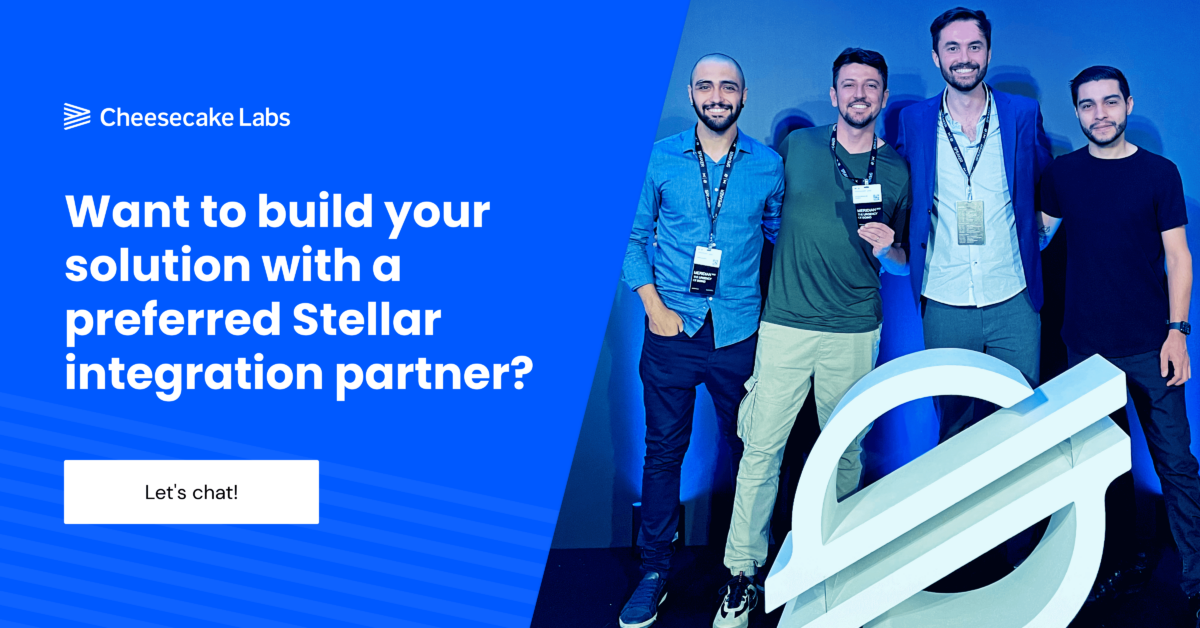Unstyled Components: A Must for Modern Web Applications
Jonathan Felipe de Oliveira | Dec 23, 2025

Blockchain has emerged as one of the most groundbreaking technologies with the potential to revolutionize industries. However, diving into blockchain integration and development without understanding the associated costs can lead to unexpected challenges.
For example, on networks like Stellar, you face monetary costs and factors like network fees and reserved balances.
In this post, we’ll explore the intricate details of blockchain costs, focusing on the Stellar network, and introduce a tool that could be a game-changer for developers and businesses alike.
The allure of blockchain revolves around its decentralization, security, and transparency. However, these features come at a cost. When planning a blockchain project, it’s vital to account for various types of costs to ensure the sustainability and feasibility of your venture.
Here’s a more detailed breakdown:
Transaction fees serve multiple purposes. They prevent network spam, prioritize processing, and, depending on the protocol, compensate network validators.
While transaction fees on many networks are variable due to congestion and demand, the Stellar network charges a nominal base fee for each operation in a transaction. However, the fee can surge during extreme load to help ensure timely processing.
It’s crucial for a business with fluctuating transaction volumes to account for these variables when budgeting because costs can quickly escalate during high-demand periods. Knowing beforehand how surge pricing will impact you can help you prepare different strategies tailored to these costs, ensuring stability and efficiency.
The Stellar network requires accounts to maintain a minimal balance. This ensures that each account has enough Lumens (XLM) to function and prevents people from spam accounts. Depending on the type of resource being allocated on-chain, there are different reserve requirements, which directly impact some actions like creating an account, opening a sell/buy offer in the Stellar DEX, setting up a trustline, and many more.
While these amounts might seem small, they can accumulate, especially for businesses that operate multiple accounts, hold various assets, or rely heavily on data entries. At scale, this is the main factor for how many Lumens must be allocated for any given solution to operate correctly.
Operational costs encapsulate the resources needed for seamless Stellar network interaction. Infrastructure expenses arise from running nodes or validators on a private Stellar instance or by contributing to the public network’s decentralization.
Maintenance involves regular updates, node synchronization, and deploying monitoring tools. Integration costs come into play when bridging Stellar with a business’s unique technological ecosystem, demanding developer expertise, middleware solutions, and sometimes third-party services.
Opportunity costs reflect the potential trade-offs in Stellar’s financial world. Liquidity constraints emerge when XLM is held for fees or reserves, tying up capital that could be used elsewhere. This potentially restricts a business’s financial agility.
Market volatility, a hallmark of the cryptocurrency domain, means XLM’s value can fluctuate. This volatility can influence operational costs and requires strategies like hedging or maintaining a diversified crypto portfolio to mitigate potential financial impacts.
Understanding these costs in-depth ensures businesses can anticipate operational expenses, plan for scalability, and make the most of the Stellar network’s features without unwelcome financial surprises.
At Cheesecake Labs, our deep-rooted partnership with the Stellar Development Foundation (SDF) has provided us with invaluable insights. As seasoned integration partners, we’ve been instrumental in guiding numerous companies to craft diverse use cases within the Stellar ecosystem. Whether designing systems for seamless cross-border transactions or building decentralized exchanges, each project has enriched our understanding of the Stellar network’s financial landscape.
A recurring theme emerged during these projects. Businesses need a precise tool that helps them anticipate, plan, and budget for their Stellar-based endeavors. This understanding led us to create a tool that sheds some light on how each solution might scale, anticipating and mitigating risk.
The Stellar Lumens (XLM) Cost Estimator will start out as a spreadsheet with added capabilities coded to cover the following items:
By melding our hands-on experience with the feedback and challenges faced by businesses we’ve collaborated with, the Stellar Lumens (XLM) Cost Estimator stands as Cheesecake Labs’ contribution to simplifying the Stellar development landscape.
Want to try out the tool for yourself? All you need to do is head to this link and make a copy. Then, follow these three simple steps to set things up and see the results:
These parameters act as base values for all calculations performed by the spreadsheet. You can change these at any time, and they instantly influence the projections.
To configure them, access the “Configure” tab and make sure all the parameters are filled in.
Here, you can define how each transaction is configured in great detail. Once you add a transaction to the spreadsheet, it will be available for simulation under the “Calculate” tab. You can add as many transaction variations as you like. This allows you to compare different approaches based on how they impact cost.
To perform this step, access the “Add Transaction Form” tab and register all transactions you’ll include in your projection. These will be available later in the “Calculate” tab to simulate multiple currencies at different stages of your solution’s scale.
Once you have registered your transactions, access the “Calculate” tab, select the desired transactions in the list, and fill in different occurrences for each one. The spreadsheet will adjust the projections automatically in both the “Calculate” and “Dashboard” tabs.
The blockchain world offers immense opportunities, but like every technology, it has quirks. By understanding and planning for the costs involved, businesses can make informed decisions and avoid unexpected setbacks. Our Stellar Lumens Cost Estimator is a step in that direction, providing transparency and clarity in blockchain financial planning.
So please try it out, send us your feedback, and join us on this journey towards making blockchain integration easier, more accessible, and more predictable.
Want to get firsthand experience with our tool? Access it here now! And feel free to make a copy and make your own changes and adaptations. Let us know your thoughts about how we can make it even better!


With several years of experience in customer services, my background goes through several areas of technical support, from incident handling and real-time support to on-site service delivery and Knowledge Management through the KCS Methodology, as well as project and product management.


